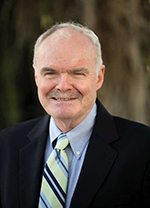Our dinner party was driving from east Las Olas, at the top of the islands, to meet us at the Riverside Hotel. Ordinarily, that nine-block trip takes about five minutes, sometimes a little longer on busy nights. When the party was 15-minutes late, we called to find the problem. Extremely heavy traffic, we were told. Another 15 minutes passed, another call. Traffic not moving at all on Las Olas. It was 45 minutes before our party arrived, and we were suspicious when they said at a traffic light they were three cycles when nobody moved. The problem, as we now know it as gridlock, was cars coming from a few side streets, getting stuck in the middle of the intersection, blocking the street so nobody could move. We thought they were exaggerating to cover their lateness. Until we drove back the same Las Olas route. It was still bumper to bumper, stopped cold, all the way for 10 blocks. Welcome to the future.
We had just read a Sun Sentinel editorial lamenting the influence of lobbyists on the government bodies who vote on growth issues. These are people who make a living representing developers, influencing and making decisions that often favor the developers who hire them, often in the face of strong opposition from neighbors. They usually say how the latest monster building is a great boon to its neighborhood, and ignore the increasing burden on the city's infrastructure. Fort Lauderdale has its best neighborhoods on the east side of town, and every increase in downtown traffic hurts the quality of life in these neighborhoods.
Those who still read the Sun-Sentinel had to be amused by a recent article in which city commissioners and others who are allowing increasing big buildings justified their behavior. One commissioner was quoted as saying "people want to come here," as if they had a moral obligation to welcome newcomers. Quite a contrast from the attitude on newcomers on a national scale. Imagine Donald Trump welcoming immigrants from all over the world because they want to come here.
When we read about the downtown growth of recent years, our thoughts drift back to Bill Farkas. Farkas became Downtown Development Director in the mid-1970s. He took the job when downtown's highest building was Landmark Bank, nine stories tall. Much of the downtown was run down. Las Olas was quiet. A previous development director had gotten the city in a mess by illegally razing older blocks. Worse, Farkas suffered the humiliation of not even being told that his biggest employer, Burdines was moving its big department store to the new Galleria Mall, where it is now Macy's.

Bill Farkas was popular in a role that often involved controversial decisions.
Farkas' first win was converting the former Burdines location to a government center, holding a base of workers on a site that featured the community leadership. Progress came slowly. At one point, tennis courts were built just off Las Olas, giving the impression that something was happening. Then came a few new buildings, along with some upgrading of the stores on Las Olas. Farkas, dealing with conflicting interests, developed a reputation for tact and fairness. His upbeat and winning personality made him one of the most popular public figures of his time. Over the next 15 years, he brought downtown attractions, including the NSU Center for the Arts, a new library, the Discovery Center, and facilities for Broward College and Florida Atlantic University. By the time he left as development director, development was noticeable. Farkas' crowning achievement was yet to come. His reputation for competence earned him the job of building the ambitious Broward Center for the Arts on an artificial mound on Las Olas west of Andrews Ave. It spurred the renewal of that depressed neighborhood. Wayne Huizenga's Blockbuster, located nearby, and a whole block of restaurants appeared just west of the FEC railroad tracks. Wally Brewer's Olde Towne Chop House and the Tarpon Bend restaurant across the street became hot spots.
By 2000, his success in redevelopment was producing a reaction from residents concerned that it was too many high rises, too fast. There is no record of his commenting on the subject, but his work over the next decade is telling. He had lived in Miami Beach, and he took over leadership of preserving historic buildings in that neighborhood. By the time of his death in 2019, one has to think that the accelerating redevelopment in Fort Lauderdale may have him wondering if he had been responsible for dramatically altering the city's ambiance. On the other hand, there are worse legacies than being too successful.
We used to have a standard joke whenever the name Villanova came up, usually in a sports context. "Villanova's not a very good school," we would say, "two of my brothers got in there."
With the recent news that the new Pope attended Villanova, we have to modify that old line, for this new distinction is right up there with Villanova's NCAA basketball championships. The truth is that our family's connection to Villanova is strong, not unusual for a former Philadelphian. Villanova is just west of that city, an early stop on the famed Main Line. And the family connection is overwhelmingly positive. Two of our brothers attended Villanova on Navy ROTC scholarships, and both went on to earn doctorates, John (better known as Mike) in engineering from Columbia and Frank, from the University of California in Berkley. Both had interesting careers in their respective choices. Frank was honored by Villanova as a distinguished alum.

Frank McCormick, Ph.D., was honored as a distinguished alumnus by Villanova in 1984. He is flanked by Rev. John Driscoll, president of Villanova, our mother Sara Sweeney McCormick, and our cousin Margaret Sweeney Schneider and her husband Jack. At the time Frank was vice president and director of economic research for Bank of America. Margaret Schneider spent 40 years with the Villanova alumni office.
There is more. Our cousin Margaret worked in the alumni office for 40 years, and just last year grandson Tommy McCormick graduated with a major in economics. In recent years, helped by its basketball prowess, Villanova has enhanced its national reputation. Increasingly Catholic high school students in Florida consider acceptance to Villanova a real achievement, up there with Notre Dame and a handful of long-respected schools.
The addition of a Pope to its roster of graduates is a further distinction - a different kind of V for Villanova.
Even within the bizarre circumstances of today's propaganda-laden media, there has been a notable development in mainstream (or almost mainstream) coverage of major stories. Stations refer to each other all the time, citing sources of breaking news. But what is happening with Fox is different. In recent weeks, and several instances just today, one of the featured stories on various TV channels has been a story about another organization's version of the same story. Fox News has been the subject of reports of its own reporters criticizing the Trump administration. How strange that a network deviating from its usual company line should be considered important enough to make primetime news.

The author interviewed Roger Ailes in 1969.
As we have written before, we think Fox News is awful and responsible for much of our country's unfortunate polarizations. Our perspective on that organization is unusual, for it goes back 60 years when Fox was just a dream in the mind of Roger Ailes. Ailes had just become nationally known, thanks to Joe McGinniss' best-selling book, "Selling of the President - 1968". Ailes had been a producer of the popular Mike Douglas Show out of Philadelphia. He met Presidential candidate Richard Nixon on the show and talked himself into the job of running Nixon's TV campaign. Joe McGinniss quit his job as a featured newspaper columnist to follow the campaign. McGinniss had a rich dose of con in him and managed to get Ailes to open up to a remarkable extent. His book included a lot of Ailes' cynical and amusing comments about his own client. He likened Nixon to a schoolboy who always had his homework done and wouldn't let you copy. Nixon won the election and Ailes was given a lot of credit, especially by McGinniss. Ailes loved the recognition and became friends with McGinniss whom he later advised on McGinniss' own TV appearances.

The author interviewed Roger Ailes in 1969. The bestseller shot Ailes to importance.
Part of that recognition was a little story we did for Philadelphia magazine. We spent a few hours with Ailes in his office, discussing his methods to make the stiff Richard Nixon seem real enough to vote for. Ailes had stacked interviews in major markets with Nixon supporters who asked softball questions. That afternoon he justified that manipulation by arguing that the media was dominated by Democratic-leaning reporters, and the Republicans needed to control coverage in whatever way they could. He actually mentioned organizing a TV channel that would carry the Republican slant on news.
Ailes, after increasing his prominence in several presidential campaigns, eventually established Fox and built it until he resigned under sexual harassment changes. He died in 2017 in Palm Beach. He barely made it to see Donald Trump becoming the success of his unprincipled concepts. Given what we know about Ailes' tendency to ridicule his clients, wouldn't it be a trip to hear what he really feels about Trump.
One of the problems with living to the landmark age of 100 is that not many others from your past are still around to join in the revelry. Except for the really famous, the media doesn't note such events. So today we younger old people make up for that neglect with a couple of references to people who have certainly made their contributions during much of the last century.
Last night we purged our telephone list for the first time in several years. There were a few names on the list we could not even remember, and many others we have not contacted in years. Of course, the only way to do that is to dial the number and see what happens. Although the name is alphabetically well down on our list, we decided to call Woody Woodbury, who since we arrived in Florida, has been a popular local comedian who made forays into the national entertainment scene. We used to have lunch with Woody and publicist Jack Drury until Drury's death in 2021. We were happy to hear Woody's mischievous voice, and one of the first things he said was that he was 101 years old.

Woody Woodbury
Many people don't know Woody is still with us, and fewer recall what distinguished him beyond his world of laughter. During World War II, Woody became a Marine Corps pilot and one of his flying mates was baseball great Ted Williams. The pair did not get overseas, but both enjoyed the Marines so much that they stayed in the Reserves when their unit was called up during the Korean War. Years ago, when Williams was in the prime of his legendary career, they flew the Grumman Panther jet in combat, and Woody described their most memorable mission. Ted Williams’ plane was hit. He refused to bail out and instead chose to nurse his smoking craft back to base. Woody landed first and pulled his plane to the side of the runway as Williams, with no hydraulics to lower his wheels pancaked his jet, took a fiery side almost forever and as it stopped and tilted on one wing "that big son of a bitch was out of this plane in seconds.” Williams resumed his baseball, and when he retired, lived in the Florida Keys where he and Woodbury remained friends until Williams' death in 2002

Ted Williams
Another old friend who exceeded 100 is broadcast giant Joe Amaturo, now 102. Joe, a leading philanthropist often to Catholic causes, was one of the first people we wrote about in 1971. He was new in town, and we heard he gave us credit for quick acceptance. Joe is retired, oddly enough, but his son Lawrence runs a chain of radio stations in California.

Joe Amaturo c. 1971
The crash of two planes in the Potomac River near Reagan International Airport revived memories of a similar crash which had a profound effect on South Florida. In January 1982, an Air Florida plane attempting to take off in bad weather from the same airport crashed into the 14th Street Bridge and wound up in the freezing Potomac. The loss of life was 74 passengers and aircrew and several people on the bridge. The accident was the beginning of the end for Air Florida, based in Miami. Aside from the aircrew, the flight was headed to Fort Lauderdale and many of the dead had local connections. Air Florida began as a local airline but had expanded into international service. After a slow start, the airline had several highly profitable years and its future seemed promising. But the investigations blamed the crash on pilot error - trying to take off with icy wings and poor pilot response to the emergency. 78 people, including a few on the bridge, died. Only five people survived. It was devastating publicly and Air Florida bookings took a dive and several years later it went bankrupt and was sold in distress.

Photos such as this ran around the country, dooming Air Florida.
Almost everybody in South Florida knew some of the hundreds of employees based here. Our own connection was a charming young woman fresh out of college who went from working almost free for an obscure local publication to the attractive job of PR Director for Air Florida. It was she who arranged for us to take a very pleasant press trip to Ireland as part of the celebration when Air Florida introduced European flights. Oddly enough, our friend got favorable publicity for the professional way she handled the crisis and went on to build her own PR firm in New York, specializing in crisis management.
A slightly happy ending to a tragic story.
Robert F. Kennedy the younger is a mixed bag. His co-existence with the corrupt Trump organization is an embarrassment to his distinguished family name. On the other hand, he is admired for a career of environmental work, but the jury is decidedly locked when it comes to some of his current very outspoken positions on public health. Many, including some medical people, think he may have a point about vaccines, especially the batteries given to the very young, but think he has taken the cause to dangerous extremes. But there is another topic on which we think he deserves unanimous applause. Two weeks ago, marking the 61st anniversary of the murder of his uncle, President John F. Kennedy, he said he could convince any jury in the country that the CIA was responsible for the crime. He said all the key players traced to South Florida and the Cuban community's intimate involvement with the CIA. He was right on.
If longtime readers of Gold Coast Magazine, and later this blog, think they have heard this story before, they sure have. Since the 1970s, we have been compelled to react every time we hear prominent figures say that there are so many conspiratorial theories that we will never know for sure what happened. And occasionally, but less often than in the past, we read that Lee Harvey Oswald is the accepted killer. The more thoughtful accounts of this profound tragedy usually trace events from the day of the assassination through the Warren Commission, which pinned the blame solely on Oswald, and up through the government committees in the 1970s which concluded that there was a conspiracy but left the public to pick its own favorite killer organization.
That's where we came in and why today we feel a moral duty to engage whenever important commentators such as Robert Kennedy reawaken the public interest. Gaeton Fonzi was a partner in Gold Coast Magazine, so we are among the very few people still standing who had an inside view of Fonzi's 1970s investigations and know the story behind the story the government never fully told. Actually, it was told first in the pages of Gold Coast in 1980, and we will get to that.

Gaeton Fonzi in the 1970s.
Gaeton Fonzi, and almost all the principal figures in his story, have passed. But his work likely influenced Robert Kennedy. Fonzi was one of the first to seriously challenge the Warren Report in the mid-60s. He interviewed Arlen Specter, later a U.S. senator, the man who came up with the "magic bullet" theory needed to explain how Oswald could have acted alone. Fonzi was shocked that Specter could not explain his own theory. Fonzi's piece in Philadelphia magazine, where we both worked at the time, was read by Pennsylvania Senator Richard Schweiker, who a decade later reopened the investigation in the Church Committee, which evolved into the House Select Committee on Assassinations. Schweiker was convinced Oswald was an intelligence operative set up to take the blame. Fonzi was by then in South Florida with Gold Coast, exactly where Schweiker wanted him to probe the CIA connections to the anti-Castro Cubans in Miami.
Fonzi did just that, finding a leader of the anti-Castro movement who inadvertently told Fonzi he had seen Oswald with his CIA handler in Dallas not long before the assassination. After considerable work, Fonzi learned the CIA man was a high-ranking figure who coordinated the anti-Castro effort in Miami. At that point, Fonzi sensed the CIA attempting to sabotage his work, just as it had the Warren Commission years before. The man who headed the probe, a brilliant Philadelphia prosecutor named Richard Sprague, was forced out when he refused to sign a secrecy agreement with the CIA. His successor was a well-meaning organized crime specialist who could not believe the CIA was involved. He directed the investigation toward the Mafia. Fonzi met some interesting mobsters, but it was largely a waste of his time, just as were various bogus tips Fonzi got from people who turned out to be CIA contacts.
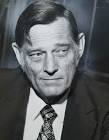
David Atlee Phillips was the CIA man Fonzi linked to Lee Harvey Oswald. He unsuccessfully sued Fonzi and the Washingtonian magazine.
The bottom line was that the final report of the House Select Committee on Assassinations, largely written by Fonzi under pressure, did not give his CIA work adequate weight, and hinted that the mob was involved. In short, inconclusive. Disgusted, Fonzi wrote his own version - long articles that first ran in our magazine and the influential Washingtonian magazine. Fonzi spent the next decade expanding his research and finding other sources linking Oswald to the CIA. In 1991, he published "The Last Investigation." It was praised by JFK researchers but generally ignored by major media. Over the years, however, it has grown in stature. Today, it's cited as a landmark work. When Gaeton Fonzi died in 2012, the New York Times ran a featured obit and said the book was among the best of the hundreds written on the assassination. And anybody who read it knows the CIA was involved in both the murder and the years of elaborate cover-ups.

"The Last Investigation" has seen several printings.
On both Fonzi investigations, the Warren Commission in the 1960s and the reopened investigation in the 70s, we watched over the man's shoulder. In fact, much of his work on the Florida project took place in our magazine office. We met most of the people working with him and they all suspected the CIA. We couldn't help but become something of an authority on the authority. Fonzi is not around to endorse Robert Kennedy's very strong indictment of the CIA, so we will do it in his memory.
The recent disastrous flooding in the western North Carolina mountains brought back a flood of a happier kind - 40 years of memories of covering the towns and the Floridians who vacationed in them. It began shortly after we arrived in Florida in 1971 to take over what we turned into Gold Coast magazine. We quickly learned that Fort Lauderdale and the nearby towns emptied out in the summer. At least our affluent readers did. And the destination for most was the hills of the Carolinas and north Georgia. It was a logical place for us to follow our audience, and we did not have to go far to get started.
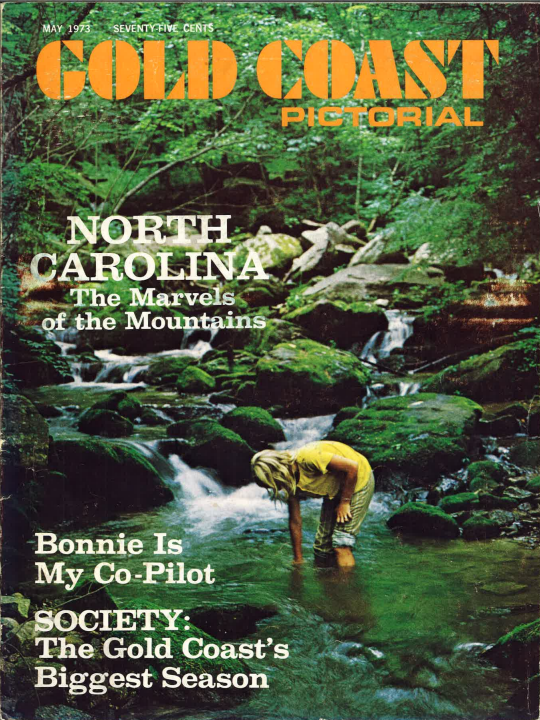
Beginning in the early 1970s, Gold Coast published annual stories about the Carolina mountains and often promoted them on covers.
Just up the street in our Colee Hammock neighborhood in a big walled home lived the Fleming family. Foy Fleming was a community leader, a prominent lawyer and banker. We learned that he took his family, not just in summer but also over the Christmas holidays, to their second home in Cashiers, North Carolina. It has been one of the more popular destinations for Floridians, including the family of former Fort Lauderdale mayor and longtime congressman E. Clay Shaw. We had not yet met Foy Fleming, but we made arrangements to see him in the hills. We got some nice pictures of his family amid their holiday decor. It was the start of regular visits to the area. Hardly a town was mentioned in the recent flood stories that we had not covered over the years.
As we recall, that first story attracted the attention of Betty Mann, who worked in PR for Saks Fifth Avenue. She introduced us to a friend, Helen Tellekamp, from an old Miami family that had frequented Blowing Rock since her childhood. Helen ran a real estate company that operated out of a little office that was noted for its quaintness. We met the next summer and remained friends, and almost annual visitors, over the next four decades. Helen hosted our family on several occasions and introduced us to many friends. They often turned into stories about nearby towns such as Boone, to the north, and even places in the foothills such as Hickory, famous for its furniture stores.
Another place we soon got to know was Highlands, on the western end of the Blue Ridge range. We paid a memorable visit there with Peter Jefferson, a colorful architect out of Stuart. He had a cottage which was charmingly rustic, even by mountain standards. Many of those we covered over the years were full-time mountain people, some of whom had come up from Florida to start businesses. They tended to be in the busier towns, notably Asheville and nearby Hendersonville. One of the more interesting visits was with Hugh Morton, who owned Grandfather Mountain. Morton was wounded as a combat photographer in World War II, and remained in photography for his whole life. He supplied beautiful shots of his mountain and other communities. He was a noted conservationist who made Grandfather a wildlife preserve and protected it from too much development.
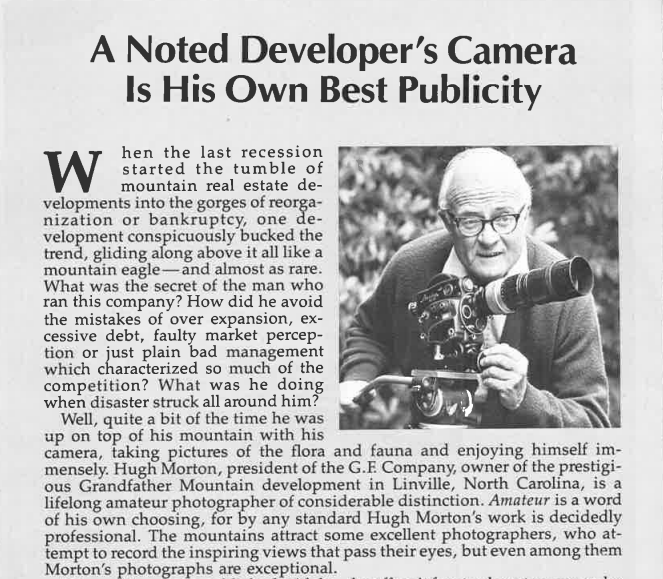
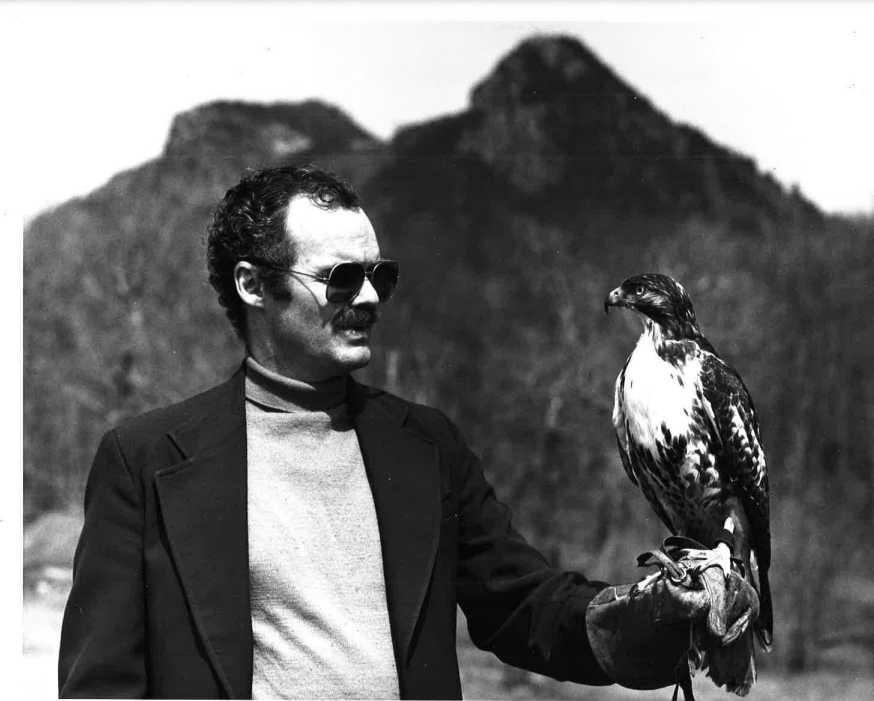
The magazine covered Hugh Morton and his Grandfather Mountain in 1980. Morton, a wildlife preservationist, photographed McCormick with one of his pet friends.
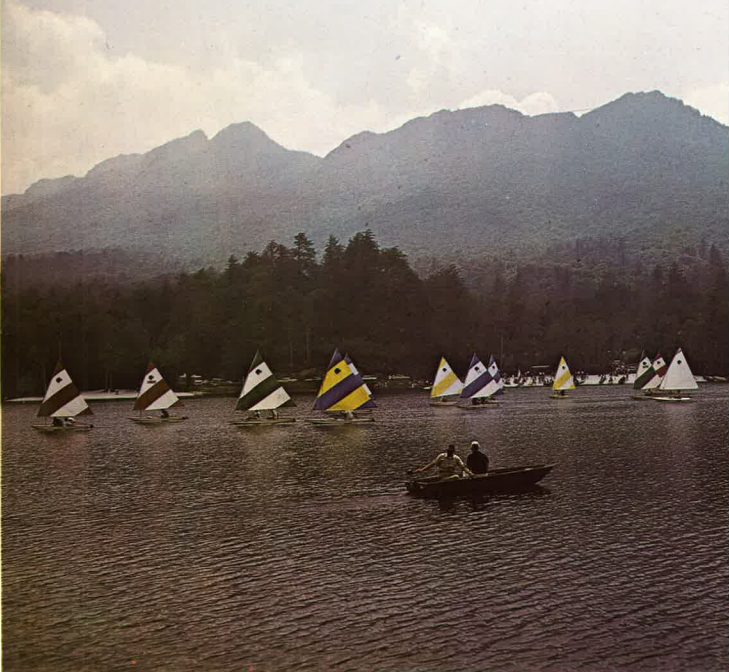
The magazine often featured Hugh Morton's photographs - this one is of his Grandfather Mountain.
As our family grew we joined the crowd who made the hills a cool summer retreat. Our daughter and son-in-law eventually bought a place in Bald Rock, high above it all in Sapphire Valley, near the Cashiers area. After several years, they gave it up for lack of time to use it often.
In the 1990s, a reorganization of our company added a group of new stockholder-directors that would do a major corporation proud. Thanks to our chairman, Bob McCabe, in Vero Beach, we were joined by a member of the leading mountain family. He was a Vanderbilt who was not burdened with that famous name, but his family controlled the Biltmore Estate and much of the surrounding town. That connection led to an advertising relationship with Beverly-Hanks, the biggest real estate firm in the area.
Although our editorial was always legitimate and deserved the special sections we ran in the spring and fall, we valued advertising around the stories. It was tough to determine how effective those ads were, mainly because the advertisers rarely tracked response carefully, but we had a few stories that illustrated our influence.
An amusing one was a wealthy Stuart retiree whose wife wanted to visit Blowing Rock after reading our piece. Her husband wound up buying a classic old hotel in Blowing Rock, complete with the problems of maintaining an old wooden structure. He looked us up through Helen Tellekamp and jokingly blamed us for ruining his carefree Florida retirement.
Another time we dropped in on a young man from Miami who had bought a cozy inn in Blowing Rock. He started to complain that he did not think his advertising in Florida would pay off, when in walked a man carrying a copy of Gold Coast.
“This is a setup!” the owner exclaimed. It wasn’t, but we like to think there were more stories like that which never reached our ears. A lot of memories did however, and we wish for the day the flood disaster recedes and the hills return to the mountain escape we knew so well.
We recently took our first trip north since the COVID pandemic, and we returned to the same form of travel we have taken many times over the last 50 years – the Amtrak Auto Train. And we wonder why this concept, one of the few long-distance rides to make money, has not been duplicated all over the country.
The train takes your car aboard at Sanford, Florida, and terminates at Lorton, Virginia, a short hop south of Washington, D.C. Prices vary according to season but ours cost $1400 each way. There are three classes to choose from – coach seating, a roomette, or a private bedroom. We had the most costly - a bedroom. Sounds expensive, until you consider saving on several tanks of gas and general wear on the car, meals, a night or two in a motel, and the cost of renting a car for 10 days up north.
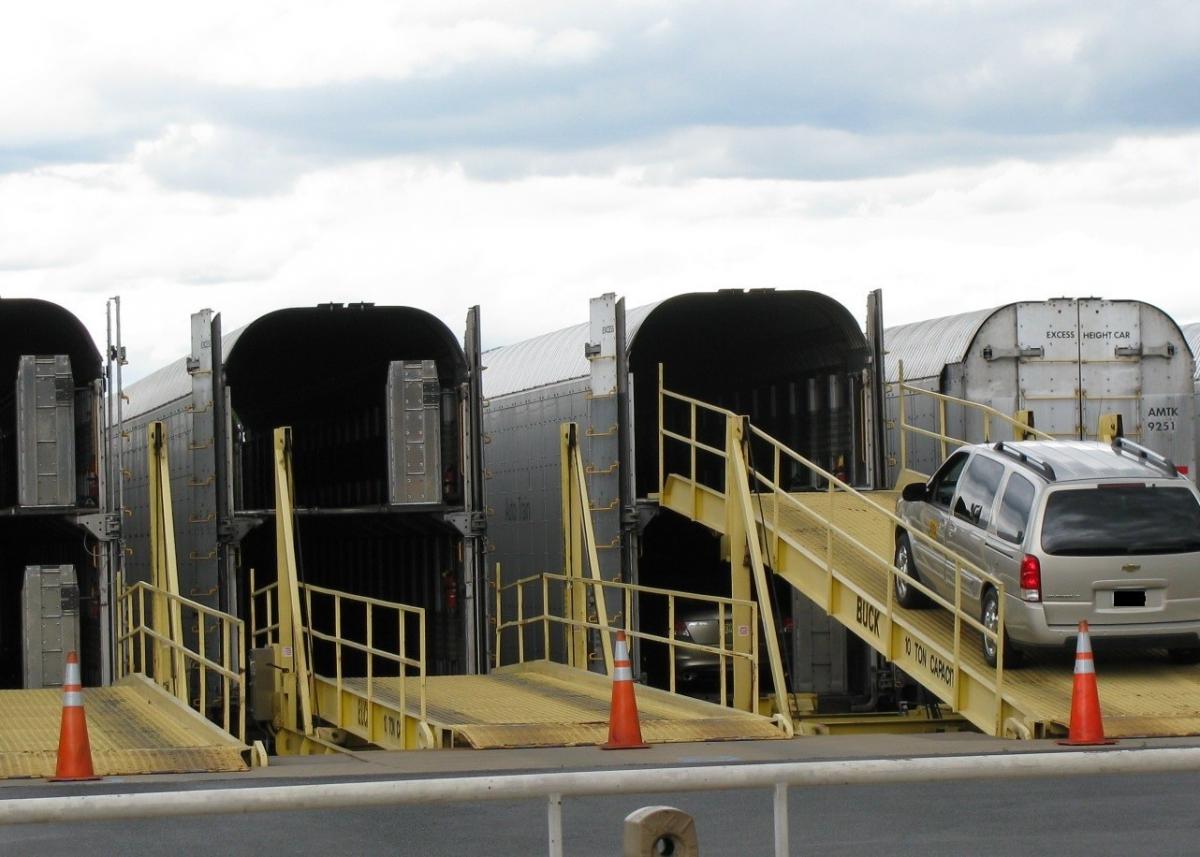
The Amtrak Auto Train
This concept has had plenty of time to prove its worth. We go back with Auto Train when it was launched in the early 1970s. It was a private venture which was immediately successful. We liked the idea so much that we bought stock in the company. Alas, that did not work out. Buoyed by its quick success, management tried to expand to the midwest. The railroads on that complex route were not up to the standard of the east coast line and management was warned that its equipment was too heavy for the tracks. The result was a derailment, and Auto Train wound up in litigation with its landlord railroads. The losses forced it into bankruptcy.
The idea had proved its potential, however, and newly formed Amtrak decided to revive it in the late 70s. It has been running ever since, making money most years. Currently, it is one of only three Amtrak lines in the black.
We have wondered over the years why this idea has not been adopted all over the country. Considering the millions of cars crowding every interstate, you have to believe that 340 cars a day (about the max for Auto Train) would not choose this relaxed mode of travel.
Most obvious is the midwest route. Certainly, there is plenty of traffic from the Chicago and Michigan areas to Florida. To guarantee success, the auto train could combine with a new conventional service from South Florida, making stops at the Amtrak stations as far as Sanford. From there, connected to an auto train, it would make only major stops - Atlanta, Chatanooga, Nashville, Louisville, and Indianapolis - before reaching a new station south of Chicago. There the conventional train could be detached and complete the route to Chicago and possibly even Milwaukee. Those stops would slow the whole train a bit, but Auto Train users are obviously not in a big hurry.
That may require upgrading some of the rails on that route to handle passenger traffic. Amtrak is already considering a new service from Atlanta to Nashville, through Chattanooga, and along the scenic Tennessee River. That would cover a large part of an Auto Train route.
When that train proved successful, as we believe it would, the new terminal near Chicago could be expanded to provide an auto train on existing Amtrak routes south to New Orleans and west to Los Angeles, the San Francisco area, and Seattle. Again it could combine with regular Amtrak trains serving the busier stations along the way. It would also seem practical on these very long (2,000 miles plus) routes to provide midway terminals to detach and load some of the Auto Train. Denver would be an obvious place on the California Zephyr to Oakland, California.
Those long-distance trains are probably too ambitious at the moment, but the midwest train is not. Indeed it is a concept that should have been continued after the flawed start 50 years ago.
Those who follow public affairs are familiar with public figures being demanded to answer complicated questions in a simple way. Example:
Senator Magpie: "Senator Target, are you directly responsible for all the problems of the world? Just answer yes or no.
Senator Target: Yes or no.
Sen. Magpie: What kind of answer is that?
Sen. Target: You asked me to answer just yes or no. I answered yes or no.
Sen. Magpie: I see, you're being a wise guy. Let me rephrase. Without answering yes or no, just answer yes or no to the question - are you responsible for everything bad in the world.
Sen. Target: Well, you have asked an existential question that requires an existential answer. If you speak existentially, when it comes to the end of the day, and push comes to shove, and it's crunch time for an existential answer, when the rubber hits the road, and it's the last of the ninth, and you come to an existential inflection point, and it's the 11th hour and time is of the essence it's time to get off the dime, and timing is everything, and put up or shut up, and you need a Hail Mary or kick the can down the road, then existentially speaking, the existential bottom line is that it is what it is. Does that answer your question?
Magpie: I don't know. I forget the question. But I have another. What does existential mean?
Target: That's a good question. It’s a word politicians use when they don’t know what to say. It means what it is. Sort of a long way to say the verb to be.
Magpie: What's a werb to be?
Target: It's verb to be. I forgot you're a MAAG. It's kind of existential. like "to be or not to be. That is the question.”
Magpie: Like the Beatles song. They wrote that, right?
Target: If you think existentially, yes or no. And maybe that’s your two-word answer. Until something dumber comes along.
The business section of last Sunday's New York Times had a long article about a Swedish company that is solving its affordable housing need by building modular homes - factory units that are cheap to build and easy to erect. The article said U.S. companies are starting to pick up on the idea as a way of providing the low cost housing that is in such short supply. The problem is serious in South Florida where so many rich people need poor people, often immigrants, legal or non, to maintain them. Alas the poor people can't afford to live anywhere near that work. Thus a shortage of affordable housing.
The Times piece mentioned some U.S. companies entering the modular field, along with some past efforts that for various reasons did not work. We only read the article because it relates to our family's history in a sad way. To our surprise, for a paper that is usually thorough about such history, there was no mention of the largest pre-fab failure of them all; one involving what was once the most powerful retailer in the nation. From early in the 20th century Sears, known as Sears, Roebuck at the time, had a pre-fab housing business that produced 75,000 houses, many of which are still standing and have become something of tourist attractions.

Sears ads showed a variety of homes.
That's where it hits home. Philadelphia was a major Sears employer. Most families in our old neighborhood had someone working for Sears. That's where many couples met, including our parents. Dad went to work in the early 1920s and spent most of the next 21 years in the pre-fab division. He specialized in plumbing and heating, which was one of the big attractions of the program. Depending on how much they wanted to spend, buyers could have a house shipped to a location ready to occupy. Buyers had to put the parts together. Some handy people did it alone, although most had neighbors' help. In a few days, a house would appear.
Sears offered a variety of designs, under a banner of "Modern Homes," from very basic structures to elaborate houses that still look good today. But what had been a thriving business took a downtown in the Great Depression. In order to make it easier to sell houses, Sears had entered the mortgage business, and the depression resulted in many defaulted loans. Sears, with classic bad timing, in the early 1930s moved its Modern Homes unit from Philadelphia to a bigger facility in Port Newark, New Jersey. Dad commuted for several years then moved our young family to North Jersey. He was just in time to see the weakened economy catch up with Sears. Facing big losses, Sears closed the Port Newark operation in 1940. Dad managed a transfer to Elmira, New York, where he managed plumbing and heating in the local store. My mom was never happy away from Philadelphia, and in early 1942, we moved back to Philadelphia. Again just in time for Sears, anticipating a loss of business as we entered World War Two, decided to lay off a bunch of middle management personnel. After 21 years of faithful service, my dad was out of work.
It is difficult to overstate the trauma for a 46-year-old man with three young sons. Dad struggled for a time, then found work in the insurance business. He wasn't cut out for that field. He did not like to gladhand or sell to relatives and friends, but he managed to survive, thanks to the protection of a union. He was always struggling with debt until we got out on our own. But getting canned by Sears permanently scarred him. Before that event, photos showed a confident, almost cocky man. Afterward, he appeared dignified but resigned to having wasted the best years of his life.
A final irony to this story. In hindsight, it appears Sears left the housing business at a very time when it could have been saved. The war produced an urgent demand for new military facilities, hundreds of barracks, and other structures needed for training. Given its experience, those buildings would have been child's play for Sears to produce, and they could be installed by army engineers. By the end of the war. it should have recovered from its pre-war mortgage disaster and be poised to fill the demand for housing from thousands of returning vets starting families.
We wish those companies today entering the modular home field well. Mostly we wish them the one quality that all businesses need. Timing.
